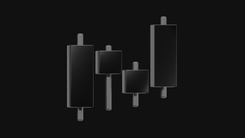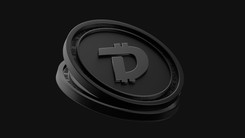- Wallet
- Coinhold 14% APY
- P2P No fee
- Mining
- Referrals
- About
- Help center
- Support
- FAQ
- Support
- For business
Yield Comparison: Earning Interest on Stablecoins vs Bank Deposits
The financial world is changing rapidly, and traditional instruments no longer offer the returns investors hope for. Against this backdrop, interest-bearing stablecoins have emerged as an alternative to classic bank deposits. But is this choice really justified? Let’s figure out which option is more profitable, reliable, and relevant in 2025 — a bank deposit or digital assets with fixed yield.
What Are Interest-Bearing Stablecoins?
Stablecoins are cryptocurrencies pegged to fiat currencies, most commonly the US dollar. The most well-known include USDT (Tether), USDC (Circle), and DAI (on Ethereum). They avoid the volatility typical of classic cryptocurrencies and are often used for value storage and payments.
When people talk about ‘interest-bearing stablecoins’, they usually mean earning yield from holding stablecoins, for example through:
- deposits in DeFi protocols
- ‘earn’ programs on exchanges (Binance Earn, OKX Grow, etc.)
- staking via custodial platforms
- liquidity mining
The interest rates on such products typically range from 5% to 20% per year, depending on the platform, conditions, and lock-up period.
Bank Deposits: The Classic Choice for Conservative Investors
A bank deposit is perhaps the simplest investment tool. The depositor earns a fixed interest rate, and the funds are insured by the state within certain limits (for example, up to 1.4 million rubles in Russia).
At the time of writing, average bank deposit rates are:
- USD — 1–4%
- EUR — up to 2%
Even with high central bank rates, traditional deposits have started losing appeal compared to crypto options.
Yield Comparison: Numbers and Facts
Let’s take an example: you invest the equivalent of $1,000 for one year.
| Instrument | Annual Yield | Payout Frequency | Key Notes |
| Bank Deposit (USD) | 3% | End of term | Deposit insurance, inflation erodes returns |
| Stablecoins (DeFi) | 8–12% | Monthly | Protocol risks, platform volatility |
| Stablecoins (Exchanges) | 6–10% | Flexible | Custodial risk on exchanges |
| Stablecoins via EMCD CoinHold | 6-13% | Daily | Transparent terms, no lock-ups |
Looking at real numbers, stablecoins clearly offer higher yields, especially when measured in foreign currencies. However, higher returns always come with higher risks, unlike traditional bank deposits.
Interest rates can change depending on macroeconomic conditions, inflation, and central bank policies. Always check the current terms before choosing an investment product.
Risks to Watch Out For
Bank Deposit Risks:
- low yields in foreign currencies
- inflation erodes returns
- limited access to funds until maturity
Stablecoin Risks:
- smart contract risks (hacks, bugs in DeFi protocols)
- no government deposit insurance
- possible account freezing on centralized platforms
- exchange rate risks when converting to fiat
Nevertheless, with smart platform choices and proper diversification, crypto-based tools can offer solid returns even in times of market instability.
Where to Earn Stable Returns with Stablecoins
If you want passive income from stablecoins without diving into complex DeFi mechanics, check out EMCD CoinHold.
With EMCD CoinHold, you can:
- deposit USDT and earn 6%+ annual yield
- receive payouts daily
- use the trusted infrastructure of the largest mining pool in the CIS
- no KYC required, no account freezing risk
What Should Investors Choose?
If you value maximum security and capital protection, bank deposits remain relevant — especially for ruble savings and conservative strategies.
If you are willing to accept moderate risks for higher returns, interest-bearing stablecoins are an interesting tool, especially in foreign currencies. They allow you to preserve purchasing power and receive real yield without locking your funds for long periods.
Conclusion
The financial landscape is changing rapidly. Just a few years ago, options like this seemed like science fiction. Today, stablecoins are not just digital fiat equivalents but a full-fledged financial tool that can offer consistent returns.
The key is to remember: high returns come with risks. But if you know what you’re doing and use trusted platforms like EMCD, you can earn significantly more than with a traditional bank deposit.




